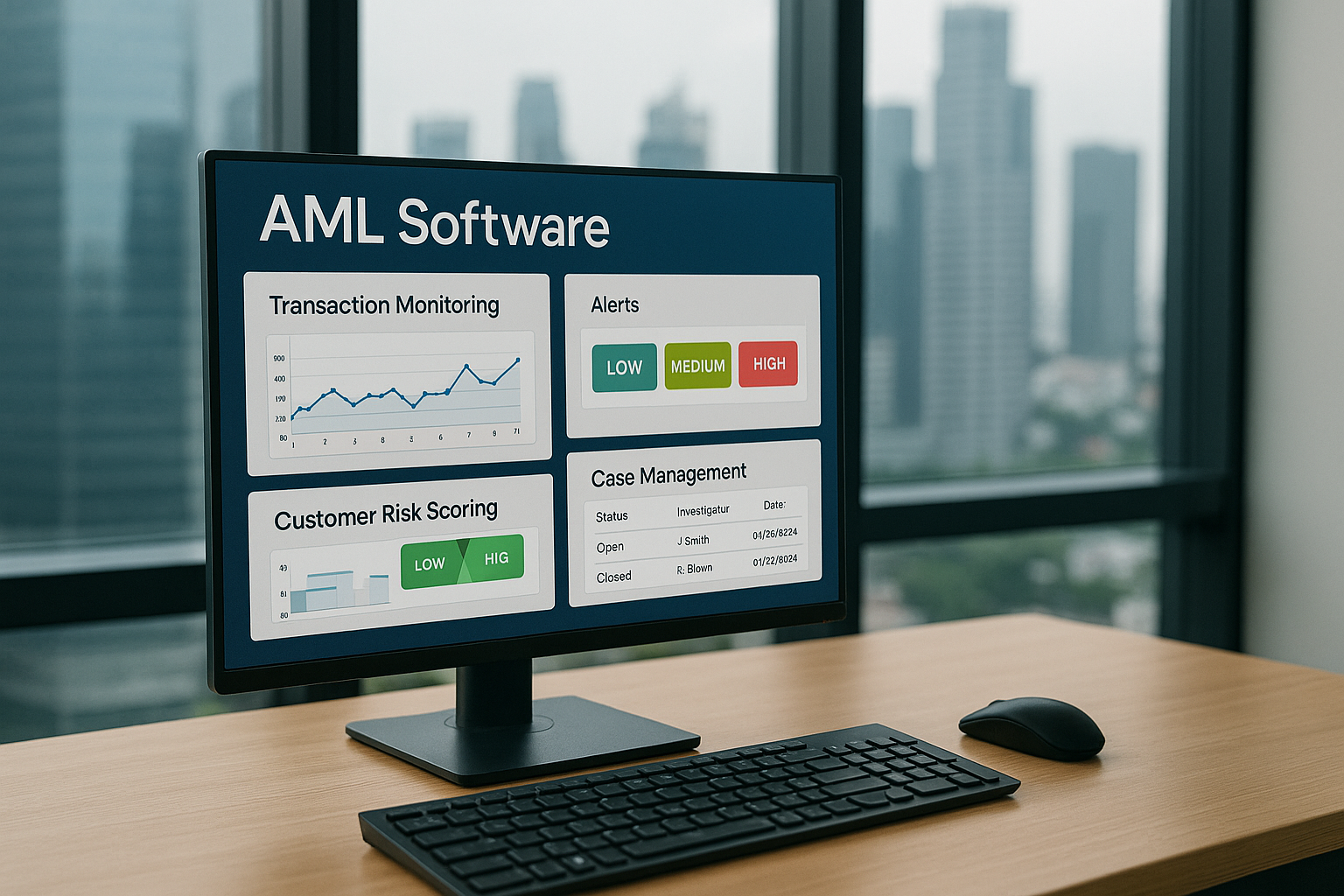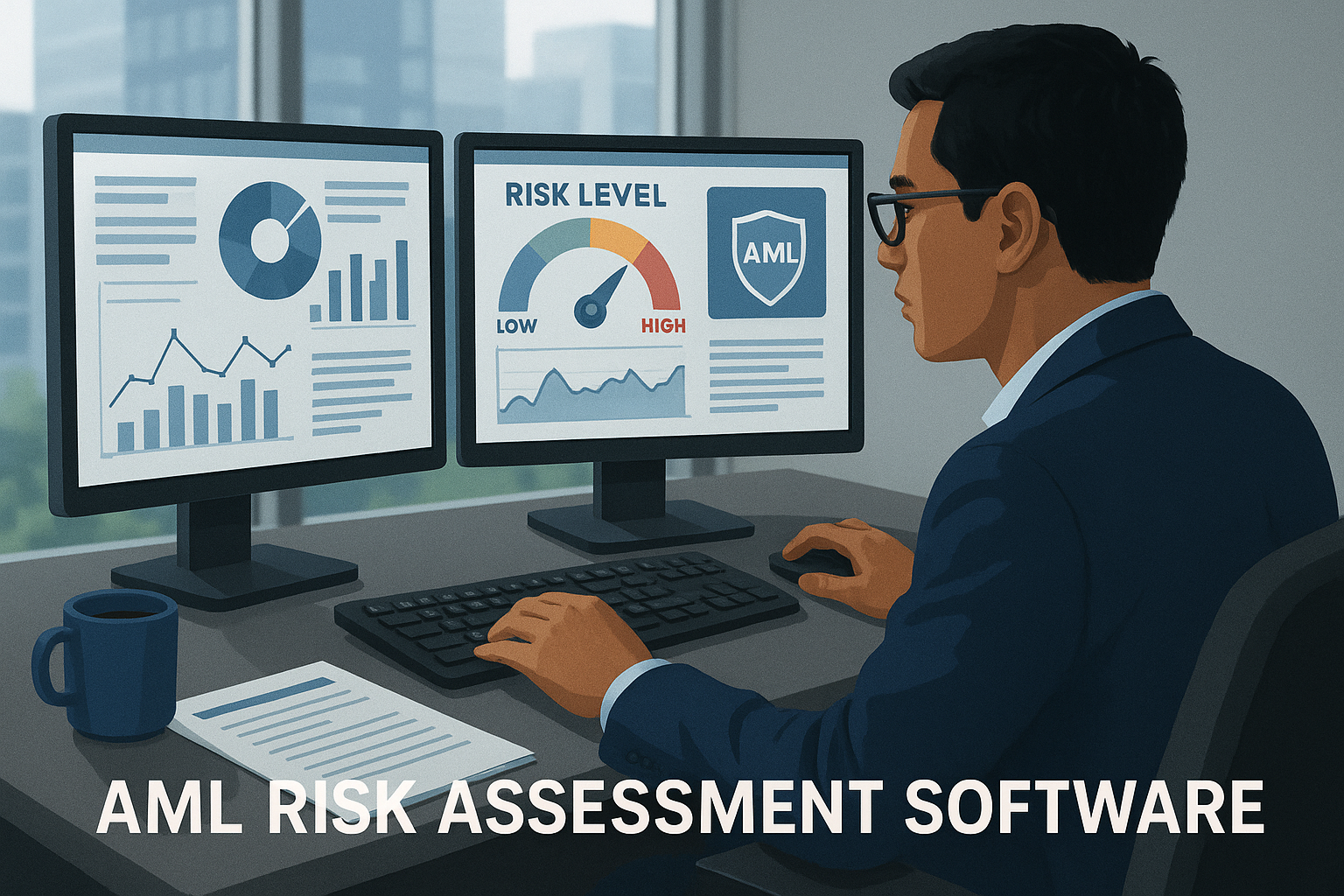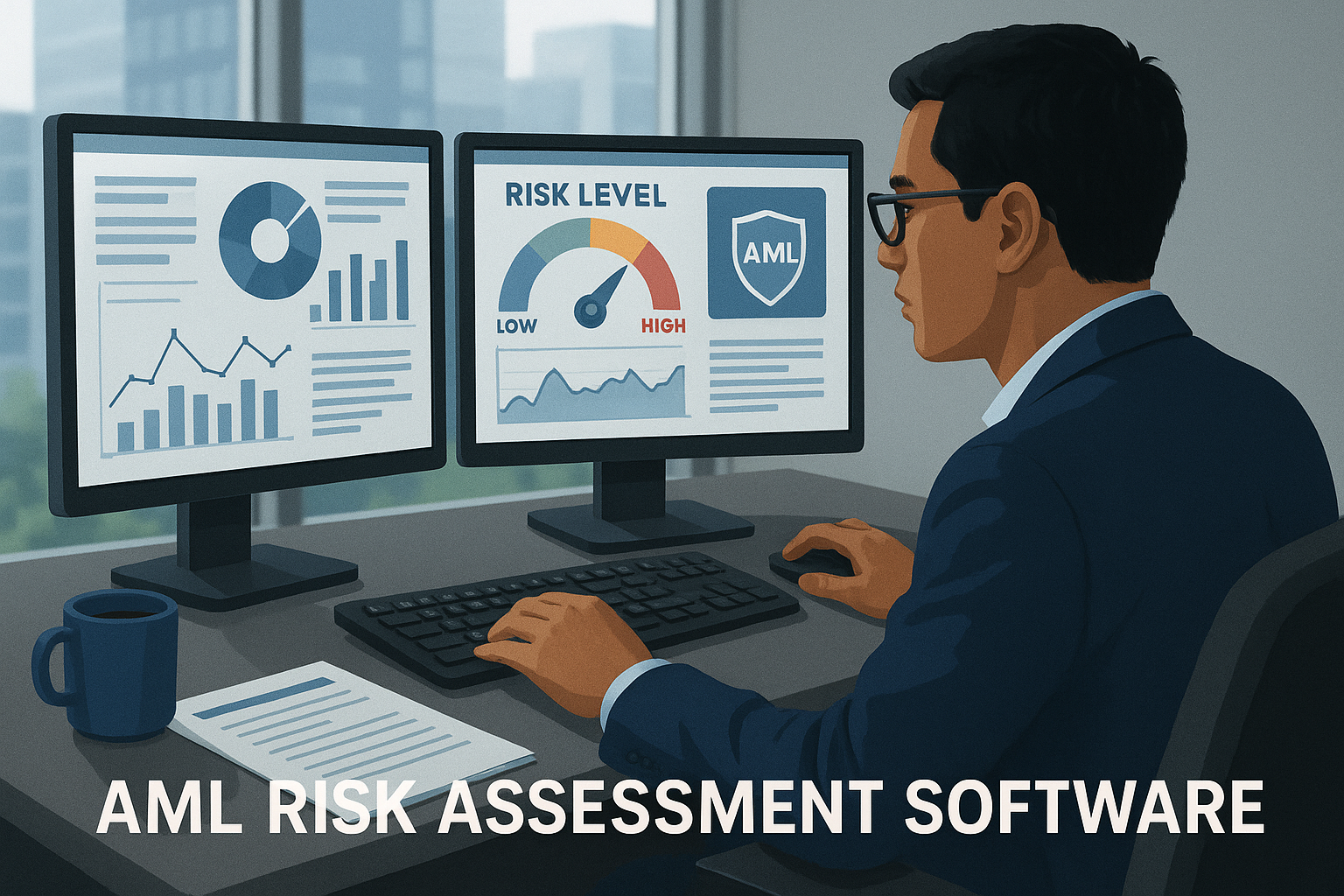Sustainable Compliance in Australian Banking: Balancing Innovation, Efficiency, and Trust
.svg)
Australian banks are redefining compliance for a sustainable future — where innovation, ethics, and efficiency work together to build long-term trust.
Introduction
Sustainability has long been a priority in banking portfolios and lending practices. But now, the concept is expanding into a new domain — regulatory compliance.
In an era of rising financial crime risks, stringent AUSTRAC expectations, and growing environmental, social, and governance (ESG) accountability, banks in Australia are realising that sustainability is not just about green finance. It is also about sustaining compliance itself.
Sustainable compliance means designing AML and financial crime frameworks that are resilient, efficient, and ethical. It is about using technology responsibly to reduce waste — of time, resources, and human potential — while strengthening integrity across the financial ecosystem.

Why Compliance Sustainability Matters Now
1. Rising Regulatory Complexity
AUSTRAC, APRA, and global bodies such as FATF continue to evolve AML and operational risk expectations. Banks must constantly adjust systems and controls, creating operational fatigue. Sustainable models reduce this burden through automation and adaptive AI.
2. Escalating Costs
Compliance costs in Australia have grown by more than 30 percent over the past five years. Institutions spend millions annually on monitoring, audits, and manual reviews. Sustainable compliance seeks long-term efficiency, not short-term fixes.
3. ESG and Corporate Responsibility
Sustainability now extends to governance. Boards are under pressure to ensure ethical use of data, responsible AI, and fair access to financial services. Sustainable compliance supports ESG goals by embedding transparency and accountability.
4. Human Capital Strain
Alert fatigue and repetitive reviews lead to burnout and turnover in compliance teams. Sustainable systems use AI to automate repetitive work, allowing experts to focus on strategic decisions.
5. Technology Overload
Fragmented systems, vendor sprawl, and duplicated infrastructure increase energy and resource consumption. Consolidated, intelligent platforms offer a greener, leaner alternative.
What Sustainable Compliance Means
Sustainable compliance is built on three interconnected principles: resilience, efficiency, and ethics.
- Resilience: Systems that adapt to evolving regulations and typologies without constant re-engineering.
- Efficiency: Smart automation that reduces manual effort, duplication, and false positives.
- Ethics: Transparent, fair, and explainable AI that supports responsible decision-making.
When these three principles align, compliance becomes a sustainable competitive advantage rather than an ongoing cost.
How AI Enables Sustainable Compliance
Artificial intelligence is the cornerstone of sustainable compliance. Unlike traditional systems that rely on rigid thresholds, AI learns continuously and makes context-aware decisions.
1. Intelligent Automation
AI streamlines repetitive tasks such as data aggregation, transaction screening, and report preparation. This reduces the human workload and energy consumed by manual reviews.
2. Dynamic Adaptation
Machine learning models evolve automatically as new typologies emerge. Banks no longer need to rebuild systems with every regulatory update.
3. Reduced False Positives
Smarter detection means fewer wasted investigations, lowering costs and conserving investigator time.
4. Explainable AI
AI systems must be transparent. Sustainable compliance relies on explainable models that regulators and auditors can understand and trust.
5. Ethical Governance
Responsible AI ensures fairness and avoids unintended bias in transaction or customer evaluations, aligning with ESG frameworks.

AUSTRAC and APRA: Driving Sustainable Practices
AUSTRAC’s Innovation Mindset
AUSTRAC actively encourages RegTech adoption that enhances both efficiency and accountability. Its collaboration with industry through the Fintel Alliance demonstrates a commitment to sustainable, intelligence-driven compliance.
APRA’s Operational Resilience Standards
The new CPS 230 standard emphasises resilience in critical systems and third-party risk management. This overlaps directly with the goals of sustainable compliance — continuous operation, minimal disruption, and robust governance.
Together, these frameworks are nudging financial institutions toward long-term sustainability in compliance operations.
Case Example: Regional Australia Bank
Regional Australia Bank, a community-owned institution, is a prime example of sustainable compliance in action. Through automation and intelligent monitoring, the bank has reduced manual reviews and strengthened reporting accuracy while maintaining transparency with AUSTRAC.
Its focus on efficiency and accountability shows how even mid-tier institutions can implement sustainable models that balance compliance and customer trust.
Spotlight: Tookitaki’s FinCense — Building Sustainable Compliance
FinCense, Tookitaki’s end-to-end compliance platform, helps Australian banks achieve sustainability in their AML and fraud operations by combining AI innovation with responsible design.
- Adaptive AI: Continuously learns from investigator feedback, eliminating repetitive manual adjustments.
- Federated Intelligence: Collaborates with anonymised typologies from the AFC Ecosystem to strengthen collective learning.
- Unified Architecture: Consolidates AML, fraud, and sanctions monitoring into a single efficient platform, reducing system duplication.
- Agentic AI Copilot (FinMate): Assists investigators in triaging alerts and preparing reports, optimising human resources.
- Explainable AI: Ensures transparency, fairness, and regulator confidence.
- Sustainable by Design: Lowers computational load through efficient data processing, aligning with ESG-aligned technology use.
With FinCense, compliance evolves from a reactive burden to a sustainable capability that delivers long-term resilience and trust.
The Link Between ESG and Compliance
1. Governance as a Core ESG Pillar
Strong governance ensures fair decision-making and transparent processes. AI systems that support explainability reinforce governance standards.
2. Environmental Efficiency
Cloud-native compliance solutions consume less energy and reduce hardware dependency compared to legacy systems.
3. Social Responsibility
Preventing financial crime protects communities from fraud, exploitation, and organised criminal activity — reinforcing the “S” in ESG.
Incorporating these principles into compliance strategy strengthens both regulatory standing and corporate reputation.
The Human Element: Empowering People through Sustainability
Sustainable compliance is not just about technology. It is also about empowering people.
- Reduced Burnout: Automation removes repetitive workloads, allowing staff to focus on analysis and strategic oversight.
- Upskilling Opportunities: Teams learn to collaborate with AI systems and interpret insights effectively.
- Stronger Morale: Investigators derive greater satisfaction when their work contributes meaningfully to prevention and protection.
In short, sustainability in compliance creates happier, more productive teams who are critical to long-term organisational success.
Challenges to Achieving Sustainable Compliance
- Legacy Infrastructure: Older systems are resource-intensive and difficult to modernise.
- Cultural Resistance: Shifting mindsets from short-term fixes to long-term sustainability requires leadership buy-in.
- Initial Investment: Sustainable systems demand upfront technology and training costs.
- Data Governance: Institutions must ensure ethical handling of sensitive financial data.
- Measurement Difficulty: Quantifying sustainability benefits beyond cost savings can be complex.
With a clear roadmap, however, these challenges can be overcome through incremental adoption and strong governance.
A Practical Roadmap for Australian Banks
- Evaluate Current State: Map compliance inefficiencies and identify areas for automation.
- Invest in Scalable Infrastructure: Move to cloud-native, modular systems that can evolve with regulations.
- Embed Explainability: Choose AI tools that document and justify their decisions.
- Foster Collaboration: Engage regulators, fintech partners, and peer institutions for collective learning.
- Measure Impact: Track not just costs, but also employee well-being, risk reduction, and energy efficiency.
- Cultivate a Sustainable Culture: Make sustainability a compliance KPI, not a side initiative.
Future Trends: The Next Decade of Sustainable Compliance
- AI Governance Frameworks: Regulators will introduce clearer guidelines on responsible AI use in compliance.
- Predictive Compliance Engines: Systems will forecast risks and self-optimise detection thresholds.
- Federated Learning Ecosystems: Secure collaboration between banks will become standard practice.
- Green IT in Compliance: Banks will measure and report on the carbon footprint of compliance operations.
- Human-AI Collaboration: Copilots like FinMate will become standard for investigators.
The convergence of technology, ethics, and efficiency will define the next era of compliance sustainability.
Conclusion
Sustainable compliance is not just a technological aspiration — it is an organisational mindset. Australian banks that balance innovation with responsibility will not only meet AUSTRAC’s and APRA’s standards but also build enduring trust with customers, regulators, and investors.
Regional Australia Bank illustrates how this balance can be achieved, showing that sustainability and compliance can reinforce each other.
With Tookitaki’s FinCense and FinMate, financial institutions can embrace AI that is not only powerful but also ethical, transparent, and sustainable.
Pro tip: The most advanced compliance programs of the future will not just protect institutions — they will protect the planet, the people, and the integrity of finance itself.
Experience the most intelligent AML and fraud prevention platform
Experience the most intelligent AML and fraud prevention platform
Experience the most intelligent AML and fraud prevention platform
Top AML Scenarios in ASEAN

The Role of AML Software in Compliance

The Role of AML Software in Compliance









